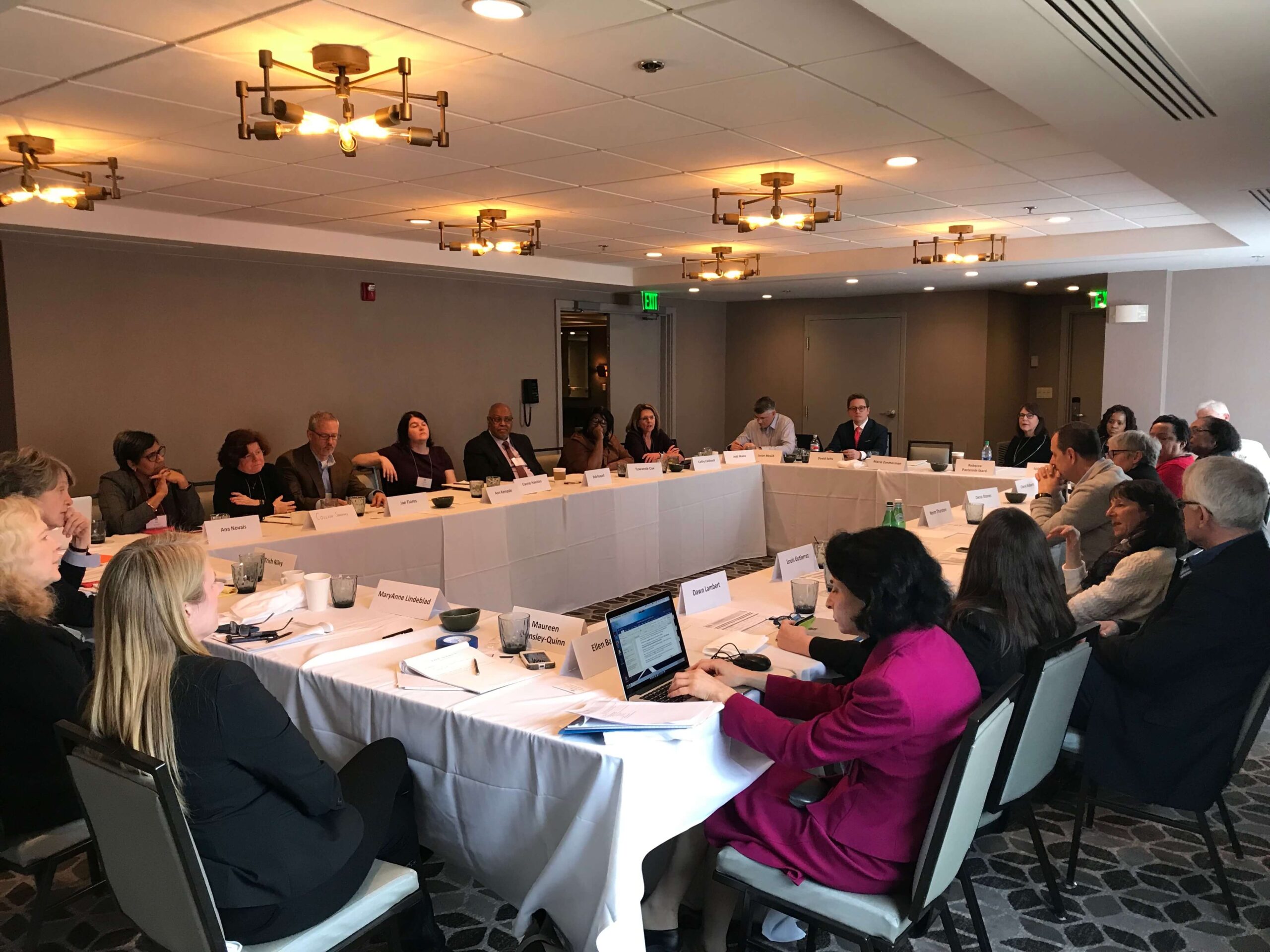
Last week, 24 National Academy for State Health Policy (NASHP) leaders, including state lawmakers and representatives from governors’, budget, and insurance offices, Medicaid and public health agencies, and insurance exchanges, CHIP and health policy commissions met in Washington, DC, to assess the issues and opportunities confronting state health policymakers. The robust discussion helps NASHP set its priorities for action and informs the annual NASHP conference agenda.
While NASHP members approached the discussion from markedly different states and perspectives, several clear themes emerged.
Costs, costs, costs: A recent Journal of the American Medical Association article that highlighted the high price of health care in the United States – double what is spent in other, developed countries due to high-priced services, drugs, devices, and administrative costs – helped frame the critical issue of cost and affordability. Members were eager to talk in-depth about:
- The role of value-based purchasing, and how policymakers can measure value and at what price.
- How investments in the social determinants of health (e.g., housing, nutrition, and education) can truly bend the health care cost trajectory.
- Is there more do to with reference pricing and giving consumers more power to shop?
- Are there better ways to manage long-term services and supports and provide effective chronic care and end-of-life support?
Members encouraged NASHP to continue its work to address rapidly-rising pharmaceutical costs and to expand that effort to address other drivers of escalating health care costs.
The changing health care marketplace: Consolidation of health providers, emergence of new players in the field such as the Berkshire-Hathaway proposal, and new mergers and acquisitions throughout health care raised questions about whether states’ current regulatory structures are keeping pace with these changes.
- What is the role of state insurance regulators as providers develop new models of care and take on financial risk, a role that has historically been the purview of insurance companies?
- Does the certificate of need program need to be re-examined and reformed to adapt to the changing market?
- Do states have adequate data infrastructure to track and predict these changes?
Coverage and federal uncertainty: Officials reflected on a year of uncertainty and recounted their efforts to sustain programs while awaiting federal action or responding to federal changes. Children’s Health Insurance Programs (CHIP) were in limbo, but states managed to maintain coverage until Congress made a much-delayed decision to continue federal financing for 10 years.
Insurance regulators and state insurance exchanges reacted quickly to keep coverage in the individual market affordable when the Administration stopped funding cost-sharing reductions in the eleventh hour last fall. Now, they must contemplate how to sustain markets in light of proposed federal plans to extend short-term duration plans and launch association health plans that are exempt from Affordable Care Act rules. which could pull enrollees out of state marketplaces with their low-cost, low-benefit plans.
As the Centers for Medicare & Medicaid Services allows more flexibility in Medicaid programs, what does that mean in practice? How will work requirements play out? What other approaches might states take?
Health care workforce: A changing health care environment creates the need for new approaches to deliver care, such as telehealth, but NASHP members shared an overriding sense of urgency to address the growing demand for a health care workforce in both rural and urban areas. They reported challenges in their home states in every area of health care, including physicians, nursing, therapists, community health workers, dental providers, behavioral health practitioners, and long-term services and supports staff. Without an appropriate workforce, state efforts to improve care integration and delivery and payment reforms will be hindered. What can states do through licensure, education, salary, and benefits to expand this vital workforce? And, how does federal immigration policy affect the availability of these critical workers?
Improving health: As state leaders face day-to-day challenges, the over-arching focus of their work is to improve population health and directly address the social determinants that impact health so profoundly. The opioid crisis continues to demand leaders’ time and action, but comprehensive work is also underway to build sustainable systems to improve health. Leaders discussed new ideas to:
- Create or strengthen linkages with school health programs;
- Improve transitions for youth with disabilities who age out of supportive services;
- Assist those leaving corrections systems;
- Help children and youth with special health care needs; and
- Employ new, evidence-based approaches that strengthen early child development.
Throughout the conversation, leaders stressed the need for state officials to break out of funding and administrative silos so they can work collaboratively and creatively to develop and implement efficient and effective policies during this period of uncertain federal priorities and funding.
Armed with these insights and concerns, NASHP will continue to work in these key areas and address them at its annual health care policy conference from Aug. 15 to 17, 2018, in Jacksonville, FL.


